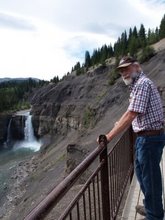Alan Boyle writes:It'll be another couple of years before the European Space Agency's Planck probe delivers its baby picture of the universe, but in the meantime, the long-wavelength surveyor has pinpointed thousands of hot spots (and cold spots) worth watching.
The hot spots are huge galaxy clusters — including one cluster that holds the equivalent of a quadrillion stars, making it one of the most massive structures ever seen in the universe. The cold spots are clouds of chilly gas and dust within our own galaxy that are on the verge of forming their first stars.
Identifying these spots isn't the main reason for the billion-dollar Planck mission, which was launched in May 2009 along with the Herschel Space Telescope. Planck's main goal is to chart the cosmic background radiation in unprecedented detail, in wavelengths ranging from the infrared to the radio spectrum. The mission is expected to produce a map of the cosmic "afterglow" from just 380,000 years after the big bang, at a resolution that's three times bettern than the map produced by NASA's Wilkinson Microwave Anisotropy Probe in 2003.

The Herschel and Planck spacecraft lifted off atop an Ariane 5 rocket from the European Space Agency's launch center in French Guiana at 9:12 a.m. ET on May 14,2009, and within a half-hour ground controllers reported that both probes had separated successfully from the Ariane. Article here

No comments:
Post a Comment